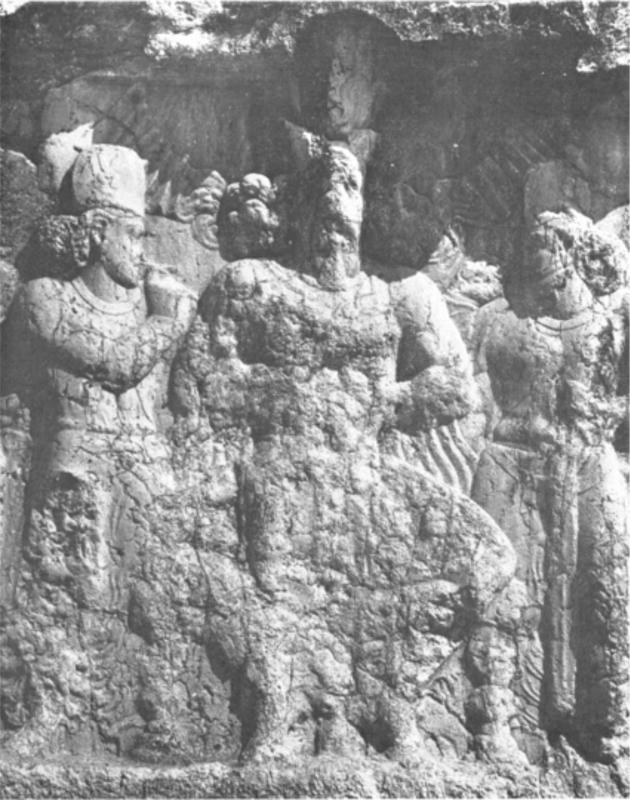
Create an Amazon Business Account
Relief of Bahram II at Naqsh-i Bahram, Bishapur, Persia, c.280s AD



In southern Iran, not far from the palace of Shapur I at Bishapur and the river gorge with its celebrated rock reliefs, is the site of Naqsh-i Bahram. On a vertical rock face, rising above a spring of water, there is carved a scene with an enthroned king and four standing figures, arranged in pairs on either side.8 The king is identifiable by his crown as Bahram II (A.D. 276-93). In spite of the significance of the royal seat on this relief and the unusual nature of the enthronement scene little attention has been paid to the precise form of the throne. Described simply as a throne or a “low wide chair or bed”,9 the particular details of its design are ignored in the publications. This is not surprising, since the parts of the relief including the throne are in an extremely poor state of preservation. The following description of this earliest Sasanian throne is, therefore, as detailed as possible. The king, seated full face with his sword held vertically between his legs, almost obscured the flat upper surface of the seat (P1. VIa.). His legs, arranged symmetrically in profile, are bent outward at the knees, forming a sharp angle, in an unnatural pose. The feet are close together, also in profile, one turned to the right and the other to left, toes pointing downward and resting on the ground. This position of the foot, with the heel raised, appears on an Arsacid relief of Artabanus V at Susa,10 and commonly in the paintings at Dura Europos.11 It is an attempt at perspective, as a comparison with Roman and Byzantine works of art clearly indicates. On the Naqsh-i Bahram relief there is no footstool underneath the feet. The legs of the royal bench-like throne are visible just below the king's knees. The best preserved is on the right side of the relief. Starting at a point beneath the knee and following the outside profile of the throne leg, there is a horizontal line which turns vertically downward and then obliquely inward toward the king's leg before curving outward again at a sharp angle. From this point curvilinear lines extend downward toward a cushion-shaped element. This, in turn, rests on three narrow mouldings which increase in size as they reach the ground line. A matching throne leg, badly worn, is still just visible on the left side of the relief.
9 G. Herrmann, “The Sculptures of Bahram II”, JRAS (1970), p. 170. Herrmann dates the relief in the 280s A.D. Upton and Ackerman note that the throne of Bahram II “is an exception … for it seems to rest on baluster supports instead of on animal figures”: SPA III, p. 2635.
Source: p.50, P. O. Harper, “Thrones and Enthronement Scenes in Sasanian Art” pp. 49-64 in British Institute of Persian Studies Vol. 17 (1979)